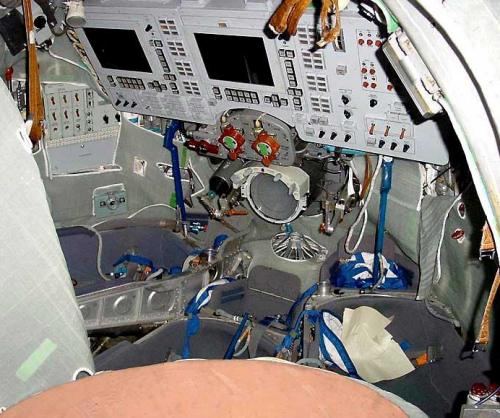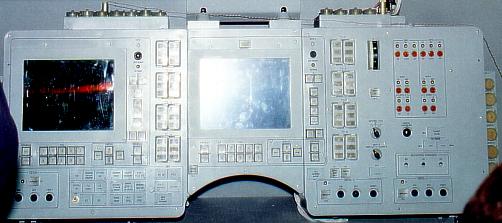I had been getting up during the nights to see if they were there, since spaceweather.com kept trumpeting that they would be visible in the South. But the details said places like "Illinois," and as far as I know, that's not the South.
Then along came sunspot 10486, burping out an X17 flare to give us a G5 storm. Or, as Joel Achenbach put it in his Washington Post style section article: "when the Sun hurls, the spew is considerable."
...so enormous that the lights were seen in Texas and Florida. Now that's the South. As I stood in amazement on my driveway, a very faint pink line formed, slowly brightened, and eventually widened out to cover most of the Northern sky. A very faint blue-green line drifted slowly westward along the veil, and faded away. These pulses of colour lasted about five minutes, with long periods of quiescence.
Here's the Defense Meteorological Satellite picture of it all:

At about 7:45 I stepped out again, and after straining to see anything to the North, I realized that the Pleiades to my right were in the middle of an intense pink cloud, and that in fact most of the display was behind me. -- i.e. the actual discharge in the auroral oval was occurring South of Washington. The whole sky above me was a dim pink. I'd bet that was the event seen in Florida.
I'm in awe because that was the first time I had seen them - even after living in Canada for many years, and having been as far North as Greenland on many flights across the Atlantic. The only things I see on those flights are noctilucent clouds - but that's another post.
The red I saw was probably an emission line from atomic oxygen at 6330 Å. The blue-green was probably from atomic nitrogen at 4236 and 4278 Å and atomic oxygen at 5577 Å (as opposed to molecular oxygen). What I do not understand is how this could have been a vertical line within the veil, since the colours are usually distributed horizontally.
Here is the best photo if have found of this colour distribution (taken in Alaska by Jan Curtis):

The upper reds are atomic oxygen above 200 miles (most of what we saw last night), the middle blue-green is the atomic nitrogen/atomic oxygen cascade between 100 and 200 miles, and if you look carefully, there is just a trace of crimson at the bottom, where molecular nitrogen below 100 miles dominates.
And now, my hunt for aurora australis begins...
There are actually also aurora caused by flares from other stars, but they are very, very faint - mostly they affect radio transmissions.
Happy Hallowe'en! (unfortunately, the solar storm will probably have passed us completely by tonight, so we can't expect another show until the Sun burps in our direction again...)
Here are two pumpkins I carved several years ago (left one from a commercial pattern, right one I made myself, based on the "Tresspasser" game.)






